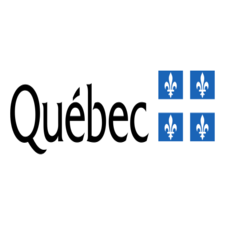Ecosystem
Type of resources
Topics
Keywords
Contact for the resource
Provided by
Years
Formats
Representation types
Update frequencies
status
Service types
-
Created for distribution by the GeoYukon application as a comprehensive resource for all publicly available Biophysical information in the Government of Yukon. This data may be used directly by other applications to dynamically display Yukon data; however, it may be subject to change as data sets are updated or added.
-

Potential wetlands on the territory of the city of Lévis**This third party metadata element was translated using an automated translation tool (Amazon Translate).**
-

Territory where the interim control by-law relating to the conservation of natural environments (RV3535) applies to the City of Lévis. **This third party metadata element was translated using an automated translation tool (Amazon Translate).**
-

Mapping of exceptional forest ecosystems (EFE) in the urban planning code (CDU) on the territory of Laval.**This third party metadata element was translated using an automated translation tool (Amazon Translate).**
-

Created in the late 1980s, the Network for the Study and Monitoring of Forest Ecosystems (RESEF) is a network for the long-term monitoring of natural forests, including more than forty stations spread across Quebec. It aims to characterize the main components of these forest ecosystems, to monitor their evolution and to study their functional interactions. Each station consists of a sample plot of 0.5 hectares in deciduous stands and 0.25 hectares in coniferous stands. In order to carry out a detailed monitoring of the characteristics of the vegetation, these plots are subdivided into plots of 100 m2 (10 m × 10 m). Each tree with a diameter at chest height (DHP, measured 1.3 m from the ground) greater than or equal to 11 mm present in the plot is numbered and georeferenced, then its DHP and its height are measured. The dimensions of the crown are noted for trees whose DHP is greater than or equal to 91 mm, and the regeneration is inventoried. Each plot is surrounded by a 100 m protection zone, in which the physicochemical properties of soils and foliage are measured. Analysis of growth rings complete the follow-up. Since 1986, data has been collected at regular intervals of 5 or 10 years according to standardized protocols. **This third party metadata element was translated using an automated translation tool (Amazon Translate).**
-
Water quality and ecosystem health data used to conduct a cumulative effects assessment of Canadian Great Lakes nearshore waters in support of the Great Lakes Water Quality Agreement are included in this dataset. The data was collected by various government and non-government agencies and organizations and integrated into this dataset to allow the assessment to be conducted. By conducting a regular, systematic assessment of cumulative effects in the nearshore waters of the Great Lakes Environment and Climate Change Canada (ECCC) is able to identify areas of high quality and areas under stress. Knowledge of ecological thresholds, other Great Lakes assessments, stressor information, indicators and local and traditional ecological knowledge will be used to aid in: 1) the identification and mapping of high quality nearshore areas and areas that are or may become subject to high stress and; 2) the determination of factors and cumulative effects that are causing stress or threats. Cumulative effects impacting the nearshore and future threats to areas of high ecological value will be better understood and the knowledge shared will assist in priority setting for science and management at a meaningful and practical spatial scale within each Great Lake and connecting channel.
 Arctic SDI catalogue
Arctic SDI catalogue